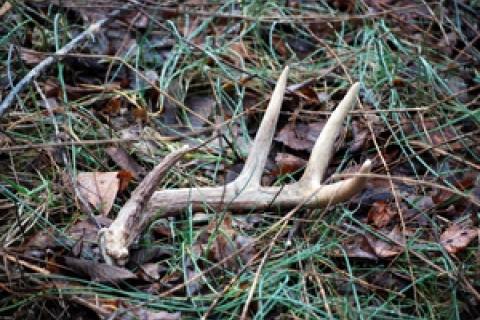
 Nearly all of the United States has endured a lengthy winter, and for the hiker living and trekking in those areas, spring cannot come soon enough. A casual amble down a designated hiking trail leads to interesting sights, sounds and discoveries. For the early spring hiker, there is an opportunity to partake in somewhat of a treasure hunt — treasure hunt that is especially exciting when kids are involved. This treasure is not found in a geocache container nor does it shine and shimmer as gold and silver does.
Nearly all of the United States has endured a lengthy winter, and for the hiker living and trekking in those areas, spring cannot come soon enough. A casual amble down a designated hiking trail leads to interesting sights, sounds and discoveries. For the early spring hiker, there is an opportunity to partake in somewhat of a treasure hunt — treasure hunt that is especially exciting when kids are involved. This treasure is not found in a geocache container nor does it shine and shimmer as gold and silver does.
Our treasure? Deer antlers. A shed antler of a white-tailed deer. OK, so it's not a million bucks (just the crown of one buck), but when the prize is found, a flush of excitement is still experienced. It's not rare to find antlers close to park buildings, along wildlife area roads, and along hiking trails. As long as you have seen deer in those areas during the other three seasons, spring antler shedding occurs within the deer's home range. If you're hiking trails that see more than a dozen hikers per day, during late winter and early spring, you better search early in the day to claim the a dropped antler before someone else does. As you hike a trail, let your eyes search far off trail for an antler part revealing itself.
Sheds are found in all types of the deer habitat. Bedding, feeding and watering areas all yield shed antlers. The best location that I have found is on travel routes; transition areas that deer journey from one site to another. Think about the most likely event when a loose antler will become unattached. Swift head movements occur more often during travel. The places to check first are where trails intersect streams and heavy brush, any situation that a buck would meet causing him to jump. The landing from a jump will jolt the antler to release. Feeding areas are the second target location, again because of head movement. Head down feeding and then a sudden jerk upward to check for danger will send a loose antler to the ground for hikers to recover.
Some antlers are dark in color and some bright depending on the deer's feed supply and genetics. Sunshine on a light colored forest floor makes the shed antler camouflaged lying on the ground. Cloudy days give the best opportunity for a find. Better still would be after a rain has fallen and darkened the forest floor. A cloudy, rainy day may not be the best for a walk but it will make those antlers stick out like a light in the dark.
So what can you do with your found treasure? Most collectors mount their antlers on a wood plaque for display. Antlers make a nice show and tell item for youngsters at school. Many craftspeople use the antlers for making knife handles, belt buckles, jewelry as well as many other items.
- 2581 views

